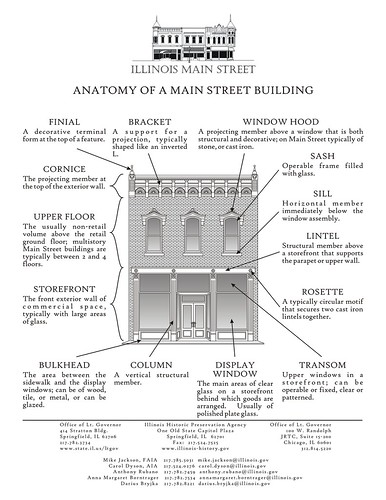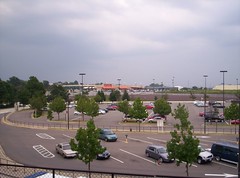Building, And Rebuilding, Community

Michael of the Dupont Circle Update a/k/a Eye Captain, calls our attention to this commentary piece in the Hartford Courant, which compares the New Urbanism community of Kentlands in Gaithersburg, to Dupont Circle in Washington, and to aggressive suburbanization of the city in places like Hartford. (Tom Condon of the Courant writes about "Place" and the paper archives his work here.)
From the article by Norman W. Garrick, associate professor at the University of Connecticut Department of Civil and Environmental Engineering and the Connecticut Transportation Institute:
Kentlands today is a true town in the old-fashioned sense of the word. It has a functioning main street with rental apartments above the storefronts, a diverse mix of housing and all the expected amenities of everyday life - businesses, schools, churches and recreational centers all mixed together and within walking distance, as in communities of old. Walking around Kentlands, the sense of community is palpable, and strikingly at odds with what you will find in most other developments from the 1990s. ...
Both Kentlands and Dupont Circle represent a new direction in American planning, a rediscovery of the skills and policy needed for place-making. Conventional postwar patterns of development create commercial areas next to retail next to residential, but these individual pods rarely add up to a community in any true sense of the word. Kentlands shows that this does not have to be the case - we can build entirely new communities. But it is not just that we no longer produce new communities: The flip side of the story is that our development and financial policies actually work to degrade existing communities. This is why a Dupont Circle is so important to Connecticut in showing us how to re-energize our urban centers and why it is essential to do so. ...
Even when we build in our urban centers, what is produced tends to weaken the urban fabric and contribute to a lessening of a sense of community. We are in essence suburbanizing our urban places by erasing the urban form and replacing it with strip malls and cul-de-sacs. This is a long-running saga in the destruction of Hartford. Fortunately, cities such as New Haven, West Hartford and Middletown are following the national lead of Dupont Circle in treasuring our peerless urban legacy and creating urban centers with a strong sense of place.
______
Michael pondered about the development along the Green Line (Columbia Heights, Georgia Avenue-Petworth), if it will follow the example of the development along the red line in upper northwest DC. Here's what I wrote:
Anyway, a difference between the Green line and the red line is the urban design sympathetic nature of the extant building stock, and to some extent the social and organizational capital within the area.
Columbia Heights got F*ed by the riots, and a lot of the new stuff that was built in the interim really sucks from a built environment standpoint. I.e., they should have let the Boys & Girls Club sell their one story piece of ... with a covenant to include a B&G Club on the ground floor. Columbia Heights Village is low dense with its back to the street. The forthcoming Dance Institute of Washington on 14th Street doesn't appear to have the right height if you ask me. But the Nehemiah Center (parking-fronted one story junk retail) is going to be redeveloped urbanistically. Although, why did they not do the same for the Duron Paint building from the get-go?
CM Graham doesn't always appreciate the necessity of ground floor retail and is ready to bend over for developers such as at the old Giant site. And wrt the new Giant site, I'm not sure he was too keen on those of us who fought, ultimately successfully, the seizure of the public space for a road.
I think the Petworth stuff will probably be good. Donatelli & Klein seems to know what's up. At the same time though, money should be set aside to work on rehabilitating and leasing up the extant buildings along Georgia Avenue. Like my complaints about 9th Street NW across from the Convention Center, I doubt that's happening. That ends up forestalling overall improvement of the commercial district for as long as a decade.
I can't imagine Connecticut Avenue in the Dupont Circle area--from 1968 to date--ever declined to the point where Georgia Avenue or 9th St. NW are today, and that is after a fair amount of real estate appreciation...
_______________
A nice example of building-district Design Guidelines are those from the North Park Main Street program in San Diego (a Main Street program funded as a Business Improvement District). The DC examples below exhibit aggressive suburbanization of an otherwise urban place.
 Suburban shopping center at Brentwood-Rhode Island Metro Station.
Suburban shopping center at Brentwood-Rhode Island Metro Station. H Street Connection, 800-900 blocks of H Street NE, Washington, DC. Photo by Inked78.
H Street Connection, 800-900 blocks of H Street NE, Washington, DC. Photo by Inked78.Index Keywords: urban-design-placemaking



0 Comments:
Post a Comment
<< Home